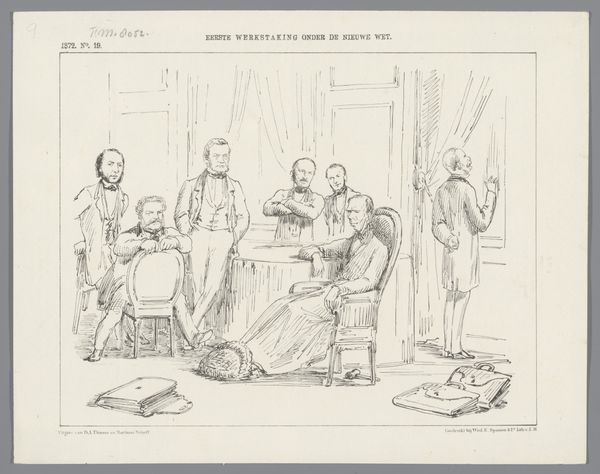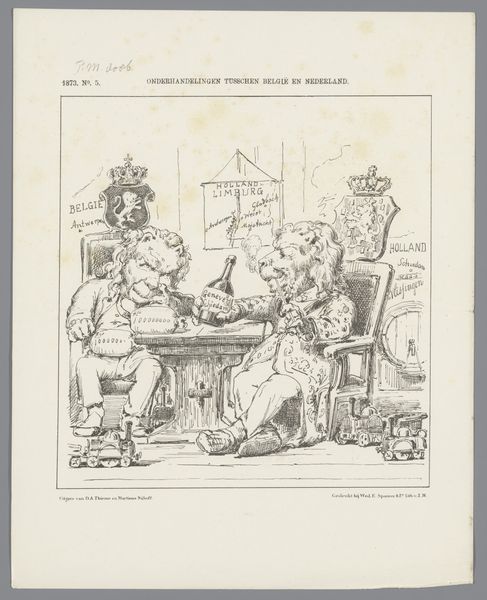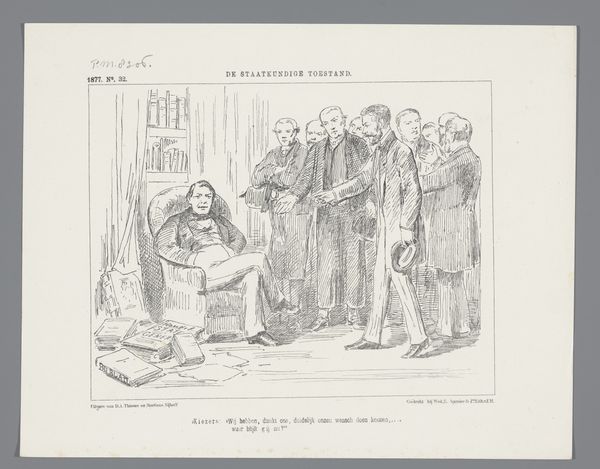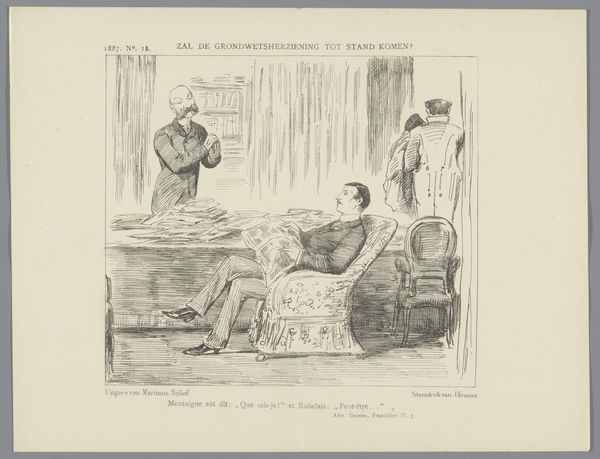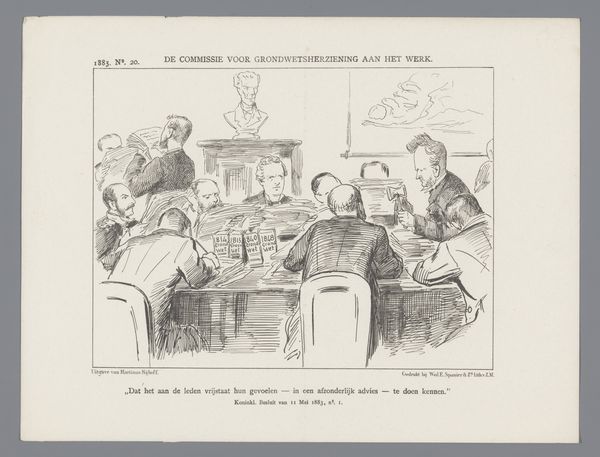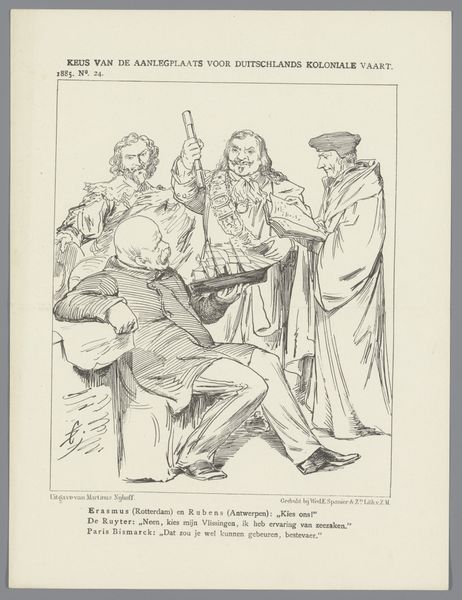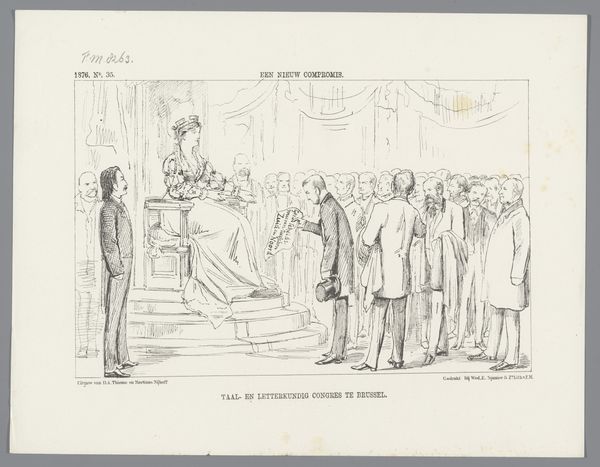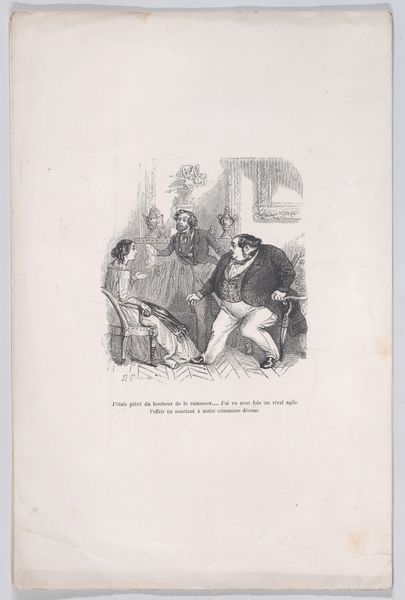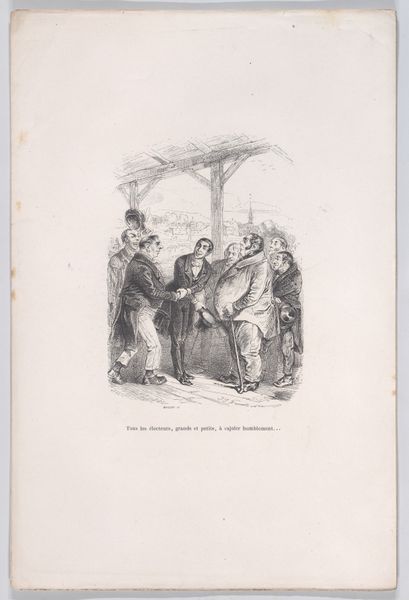
drawing, print, ink
#
drawing
# print
#
caricature
#
ink
#
realism
Dimensions: height 215 mm, width 275 mm
Copyright: Rijks Museum: Open Domain
Curator: Look at this 1885 print titled "Spotprent over de kiestabel"—a satirical cartoon, really, rendered in ink. Editor: Immediately I'm struck by this sense of collaborative labor, but strained... everyone tugging at what looks like a political map. It's cramped, intense. You can feel the weight of whatever they’re hauling. Curator: Johan Michaël Schmidt Crans, the artist, has captured the Dutch Second Chamber grappling, quite literally, with the "kiestabel" - the electoral table, if you will. These figures strain against this thing... this burden? The caption even suggests unity ("Tweedracht"), yet there's such obvious tension. What does that suggest? Editor: Given its print form, created using the reproducible process of ink transfer, this image would've circulated quite widely, probably within political circles but definitely for the broader populace to take in. The jostling suggests some kind of division or power struggle – a battle not only for representation but control of national narrative! It brings to the forefront how electoral policy, the seemingly formal distribution of representation, is intensely contested through collaborative effort. Curator: Absolutely! The exaggerated features, the frantic energy... This piece uses the visual language of realism to present an absurd interpretation, as an artist would do to reflect deeper truth about politics in 19th century society! It also reveals what making a cartoon like this depends on the labor of so many hands: from artist to publisher and eventually...the distributors. All of these makers working together for circulation. Editor: What fascinates me here is less about the singular genius of the artist and more the context in which its production happened— the means of the work’s production as it relates to broader societal shifts towards democracy, revealing complexities between collective intent. Curator: Exactly. "Unity makes strength," says the caption— a deceptively simple message for a decidedly complex and dynamic visual statement on late 19th-century Dutch electoral reform. It encourages us, or perhaps provokes us to look beyond appearances, beyond our expectations of what a functional system should embody when, like all art, the politics in visual representation comes through creative expression with an imaginative insight into public sentiment at large Editor: Right. Looking beyond representation towards the methods and motives underlying political life helps unravel complex threads within culture production: both those in pursuit & protest across various eras where such debates happen.
Comments
No comments
Be the first to comment and join the conversation on the ultimate creative platform.
